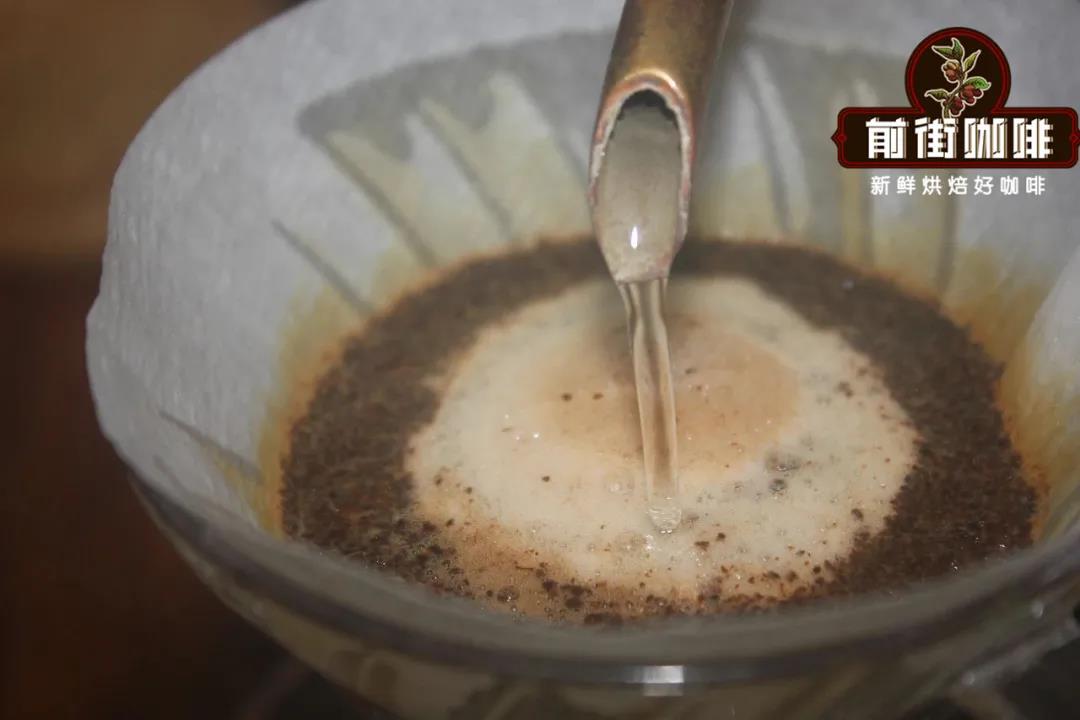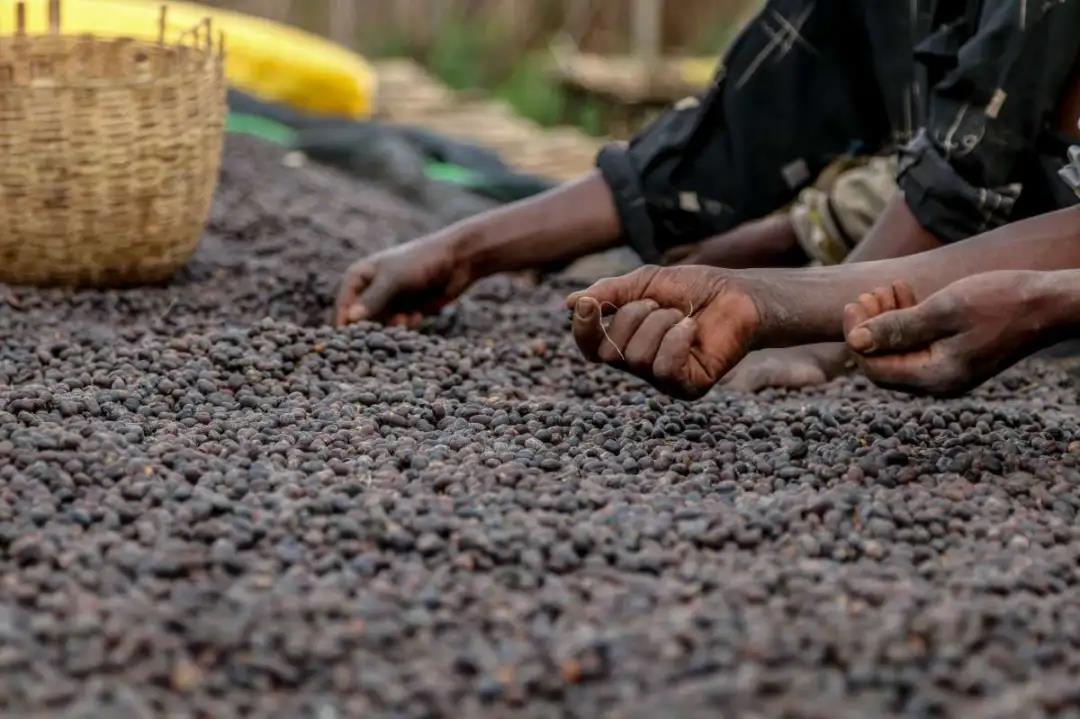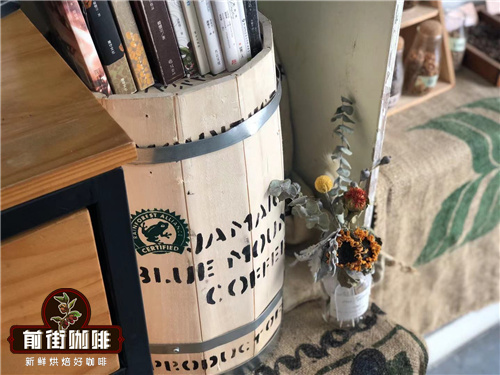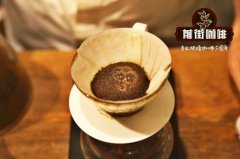Who drinks Sidamo coffee beans? Differences in Flavor and Taste between Ethiopian Huaqui and Arsi Coffee

Professional coffee knowledge exchange more coffee bean information please follow the coffee workshop (Wechat official account cafe_style)
As a landmark large boutique coffee producing area in Ethiopia, the small producing areas of Sidamo are willing to be famous, and some of them stand out and even become independent. Then Qianjie Coffee will introduce you to Sidamo, a famous boutique coffee producing area. The Sidamo Coffee region is located in the south of Ethiopia, extending to the districts of Arsi and Bale in the east and Gamogofa in the west. Sidamo coffee is cultivated at the altitude of 1400m-2000m. The industry here is dominated by agriculture, and the main growing area of coffee is around the Great Rift Valley (Great Rift Valley) of East Africa. Sidamo has developed rapidly in recent years and is an important distribution center for coffee export. The coffee flavor of Sidamo is very diverse, and the different soil types, microclimate and countless native coffee species make the coffee produced in each town have obvious differences and characteristics.

Among them, the most famous coffee growing areas in Sidamo Coffee region are GUji and West Arsi. Most of the coffee beans in the Sidamo area are treated by the sun treatment. Qianjie believes that the sun treatment makes the coffee beans in the Sidamo area have a strong fruity aroma and smooth taste. Qianjie Coffee Ethiopia Sakui 4.0 production area: Ethiopia Guji Humbera processing Plant: Buku Able altitude: 2350 m Variety: Dejia (Dega) treatment: sun treatment

Guji producing area, which once belonged to the Sidamo producing area, has been independent into a new producing area by the Ethiopian Commodity Exchange (ECX) in 2010. The Guji producing area, located in the southeast of Yejasuffi, is an area with complex topographical changes such as towering mountains, valleys and plains. The geology of this area belongs to the nutrient-rich black soil (Vertisol), the depth of the soil is nearly two meters, and the average elevation is more than 1800 meters. The significant temperature difference between day and night created by geographical characteristics makes the local area have various local conditions for producing high-quality coffee. What makes Guji famous, Qianjie has to mention Huakui beans. Sakuran beans are from Hambella, located in Guji, Ethiopia's largest coffee producing region, and are administered by the state of Oromia. The west of Humbera faces the mountains of Yega Fichier. The two producing areas are separated by a highland with an elevation of 3200 meters and a width of about 30 kilometers, and are bordered by Shakiso, Uraja and Kolasha in Guji in the east and south, respectively. It is the highest coffee producing area in Ethiopia. At present, there are nearly 20 processing plants of various sizes in Humbela production area. In 2017, Ethiopia's DW Raw Bean Company sent their coffee beans to the TOH (the Taste Of Harvest) Raw Bean Competition hosted by the African Coffee Association, and a sun batch from the "Buku Abel" processing plant won the TOH Ethiopia championship with its strong strawberry and cream aroma. At that time, this batch of raw beans was introduced to China by Hongshun, a raw bean trader in Beijing. in the same year, Li Jianfei used this bean to win the runner-up in China in the 17-year World Cooking Competition. This Ethiopian bean stands out among the many rosy summer beans, so it is named "Sakuran". Rosa Geisha means geisha in Japanese, and Hua Kui means the head of a geisha to show the excellence of this bean. )

Therefore, if we want to understand Sakui Coffee in a narrow sense, it can only be called Sakui Coffee when the 17-year champion of the TOH tanning group enters China. Of course, it would be a pity if such a wonderful name were a flash in the pan, so Hongshun continued to introduce coffee beans from the "Buku Abel" processing plant in Humbera, also known as Sakui 2.0, Sakuran 3.0 and Sakui 3.1, to distinguish the previous Sakui Coffee and represent different batches or seasons. At this time, Huakui coffee still maintains certain characteristics, that is, for Hongshun procurement and introduction, the producing area is still locked in Humbera "Buku Abel" processing plant. Of course, as an agricultural product, the flavor of coffee varies from year to year. Qianjie Coffee has tested Sakui, Sakui 2.0 and Sakui 3.0 through the cup, and found that Sakui 2.0 and 3.0 are very similar to the flavor of Sakui in 2017, but the thickness and finish of Qianjie Coffee are not as good as those of the original Sakui in 2017. Qianjie can sometimes identify the same raw beans as the original Sakui from these two batches of raw beans. As for Huakui 3.1, Qianjie found that its flavor was far from that of Huakui, and even felt that its flavor was a little close to that of Rose Summer. We also confirmed this change from raw bean merchants. In 2020, as the fourth year of this coffee bean, the area of its production area has expanded several times. Coupled with more scientific planting management, Sakui 4.0 has a better flavor and has been praised by many coffee players. A Sakui 4.0 coffee bean has also been put on the shelves in Qianjie. Frontal Street Coffee Ethiopia Sidamo Arsi producing area: Ethiopia Sidamo Alsi altitude: 1900-2200 m Variety: local native species treatment: sun treatment

West Arsi (West Arsi) is located between the famous Yirgacheffe coffee growing area and Haller Hararge at an elevation of 1900-2200m, in the western part of the Sidamo region. The name of this area comes from a branch of the Oromo people who have lived here for a long time. West Alsi consists of three woredas, namely, Arsi (Arsi), Bale (Bale) and East Shewa (Ethiopia's third-tier administrative region). About 88.52% of the population of West Alsi is Oromo, which is very important in the history of coffee because they are the first tribes in human history to drink coffee, and half of the coffee produced in Ethiopia comes from the region. Coffee cultivation in West Alsi is based on a smallholder model, and the average smallholder farm is not large, about 2-3 hectares, but even so, they tend to be slightly larger than the usual 1.5-2 hectares in most parts of Ethiopia. Although the current coffee planting technology is still in the stage of development, compared with other producing areas, the development of coffee planting technology in West Alxi is very fast. Coffee farmers do not need to hire temporary or full-time workers, but choose coffee with the help of their families. This allows them to better control the quality of coffee, and processing stations usually pay extra for ripe red cherries, greatly increasing the enthusiasm of coffee farmers. These two beans are treated by the sun. During the coffee harvest season, farmers in the Sidamo area only pick ripe red fruits and put them in baskets one by one. The picked coffee fruit has uniform size, similar maturity and no other impurities. In the process of treatment, it is necessary to manually screen defective coffee beans and immature or overripe coffee fruits. Then lay the coffee red fruit on a high wooden frame or whole scaffolding to make the sun, so as to avoid the risk of beans smelling on the ground. In the process of exposure, it will constantly turn to ensure that the coffee beans can be evenly exposed to water; every three to five days, farmers will manually screen out the defective and moldy beans. Wait for the peel to dry and harden, and then use a sheller to remove the hard peel. After obtaining the raw coffee beans, the farmer will do one last screening in pursuit of the perfect taste.

Next, the front street uses Sakui 4.0 from the Guji producing area and Arsi coffee beans from West Arsi for raw beans, roasting, cup testing, and brewing a series of comparisons to see how the coffee beans from the two producing areas are different. Qianjie coffee beans compare the two types of coffee beans with sun treatment, and the raw beans are green and yellowish in color. Huakui 4.0 varieties will have some small particles, it looks like different sizes, Arsi's beans will be more uniform.

Qianjie Coffee Baking suggests that during the roasting process of these two beans in the new season, we will: extend the dehydration time so that the bean surface and core are heated evenly. In order to show the acidity of this bean and the aroma of flowers and fruits, we use a light baking degree. Huakui 4.0: Yang family 800N, bean dosage 480g: furnace temperature to 175 degrees Celsius into the pot, throttle open 3, firepower 120. Rise to 140 degrees, throttle open 4. Bake to 6: 00 ", the temperature is 151.7 degrees, the bean surface turns yellow, the smell of grass disappears completely, and the dehydration is completed. When the bean surface appears ugly Hu wrinkles and black markings, the smell of toast obviously changes to the smell of coffee, which can be defined as a prelude to an explosion. At this time, it is necessary to listen carefully to the sound of the explosion point, which starts to explode at 9: 50 ", the throttle is fully open, and the firepower of 188 degrees is reduced to 80." the development time of an explosion is 1: 40 ", put into the pot at 196 degrees.

Arsi: Yang family 800N, bean dosage 480g: furnace temperature to 160C, throttle opening 3, firepower 120g. The firepower is adjusted at 115 degrees, and the throttle is opened at 4. Bake to 6: 00 ", the temperature is 154.9 degrees, the bean surface turns yellow, the smell of grass disappears completely, and the dehydration is completed. In the 8th minute, ugly wrinkles and black markings appeared on the bean table, and the smell of toast obviously changed to the smell of coffee, which can be defined as a prelude to an explosion. at this time, it is necessary to listen clearly to the sound of an explosion point, to 9: 08 "start to explode, the throttle is fully open, and the development time of an explosion is 1: 20", put into the pot at 193.5 degrees. Qianjie coffee brewing suggested filter cup: V60 # 01 water temperature: 90-91 degrees powder quantity: 15g powder water ratio: 1:15 grind degree: BG6m/ fine sugar size (20 sieve bowl sieve powder to 80%)

Qianjie cooking technique: the first section is filled with 30 grams of water for 30 seconds, followed by 95 grams (the electronic scale shows about 125 grams), and the injection is completed in about 1 minute. When the water level drops to 2 grams in the powder layer, the remaining 100 grams are injected at 3 places (about 225 grams on the electronic scale), about 1 minute 40-1 kilogram 39 percent 45 "seconds. 2: 00"-2 percent 39 percent 10 "trickling is completed, remove the filter cup and complete the extraction. Flavor: it smells of ripe berries, with bright acidity like passion fruit and citrus on the palate, and jackfruit's fermented fruit aroma and sweetness in the middle and back. It has the sweetness of oolong tea after cooling. Arsi cooking flavor: smell of berries and honey, entrance jam-like sweetness all over the mouth, full of sweetness, with nectarine flavor at the end, juicy taste. After cooling, it is more like a cup of plum and nectarine-flavored juice. In the comparison of the flavor of the two beans, Arsi has a slightly better sense of sweetness and juice, especially when it is hot, the flavor of jam and honey is irresistible, and the feeling of fruit juice is more obvious and comfortable when the temperature drops. On the other hand, Sakuran prefers the flavor of tropical fruits, and the alternating gap between sweetness and acidity is a great surprise. Compared with the two, Sakuran's sense of fermentation will be stronger.
For more boutique coffee beans, please add private Qianjie coffee on Wechat. WeChat account: kaixinguoguo0925
Important Notice :
前街咖啡 FrontStreet Coffee has moved to new addredd:
FrontStreet Coffee Address: 315,Donghua East Road,GuangZhou
Tel:020 38364473
- Prev

Who is suitable for Yejia Chefe Coffee? ratio of hand brewed coffee, water temperature parameters.
Professional coffee knowledge exchange more coffee bean information please follow the coffee workshop (Wechat official account cafe_style) Ethiopia is an important boutique coffee producing area, but also currently the place where coffee is grown. If you mention Ethiopia, you must know Yegashafi. Today, let's take a look at the special feature of this producing area. Ethiopia is Arabica.
- Next

Who is suitable for Sidamo Coffee? the original Sidamo Coffee is more suitable for Cancer Man?
Professional coffee knowledge exchange more coffee bean information please follow the coffee workshop (Wechat official account cafe_style). Sidamo Sidamo is adjacent to Yega Sheffield and is slightly lower above sea level. It also has mineral-rich land and a distinct dry and wet season, making it very suitable for growing Arabica beans. Sidamo is dominated by sun-dried beans, as well as oranges and blue plums.
Related
- Detailed explanation of Jadeite planting Land in Panamanian Jadeite Manor introduction to the grading system of Jadeite competitive bidding, Red bid, Green bid and Rose Summer
- Story of Coffee planting in Brenka region of Costa Rica Stonehenge Manor anaerobic heavy honey treatment of flavor mouth
- What's on the barrel of Blue Mountain Coffee beans?
- Can American coffee also pull flowers? How to use hot American style to pull out a good-looking pattern?
- Can you make a cold extract with coffee beans? What is the right proportion for cold-extracted coffee formula?
- Indonesian PWN Gold Mandrine Coffee Origin Features Flavor How to Chong? Mandolin coffee is American.
- A brief introduction to the flavor characteristics of Brazilian yellow bourbon coffee beans
- What is the effect of different water quality on the flavor of cold-extracted coffee? What kind of water is best for brewing coffee?
- Why do you think of Rose Summer whenever you mention Panamanian coffee?
- Introduction to the characteristics of authentic blue mountain coffee bean producing areas? What is the CIB Coffee Authority in Jamaica?

